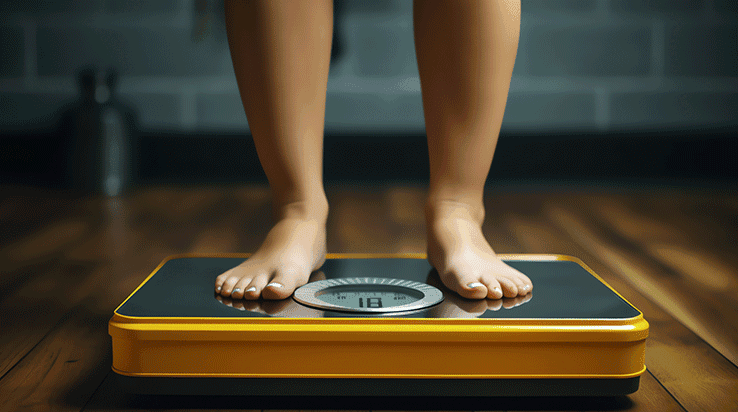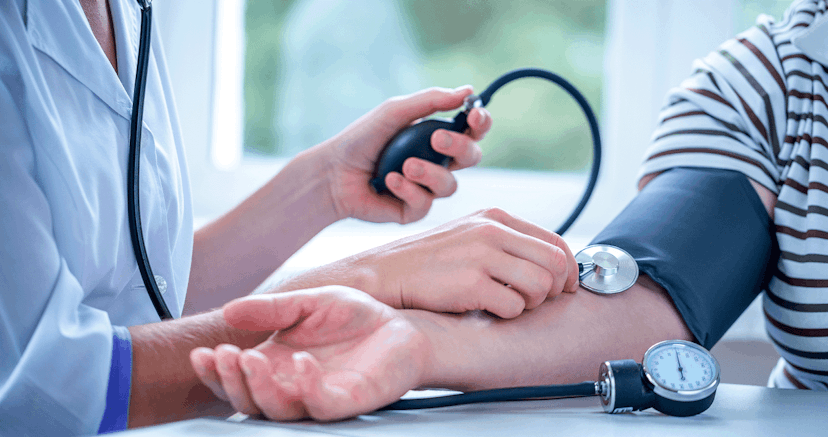Breaking the Silence: Shining a Light on Osteoporosis for World Osteoporosis Day
By:

Apex Hospitals
20-10-2023 5 Min Read

The 20th of October marks the annual observance of World Osteoporosis Day, a global healthcare event followed by various awareness campaigns and activities to encourage the early diagnosis of osteoporosis, its treatment, and preventative tips for strong bones. The primary objective of these efforts is to persuade individuals to improve their bone health by adopting preventative practises, hence mitigating the possibility of developing osteoporosis and the issues that come along with it in the future.
The importance of World Osteoporosis Day
When it comes to building better bones, knowledge is your most potent tool. Osteoporosis, often called "brittle bone disease," affects millions of people, predominantly women. When a person has osteoporosis, their bones become extremely weak. As a result, even a slight injury, like a fall, bump, or rapid movement, can cause a fracture. As one gets older, their risk of developing osteoporosis increases. It is one of the most common factors that lead to fractures in those who are over the age of 60. Because this bone disease does not manifest any symptoms, it is critical to maintain good bone health to avoid the consequences that are associated with bone fractures.
More than 200 million people are thought to be afflicted with osteoporosis at present, according to recent estimates. Recent research by the International Osteoporosis Foundation found that during their lifetimes, 1 in 3 women over 50 and 1 in 5 men will suffer an osteoporotic fracture somewhere in the world.
With the assistance of concerned organisations and people worldwide, World Osteoporosis Day (WOD) raises awareness of osteoporosis and urges people to seek an early diagnosis, assess their bone density, and take appropriate action to prevent any future difficulties related to bone health. Maintaining healthy bones and preventing advanced osteoporosis can be helped by adopting a particular way of life and adhering to good eating habits.
The World Osteoporosis Day theme for 2023 is "Build Better Bones" to emphasise the relevance of adopting a bone-healthy lifestyle as the foundation for strong bones and a fracture-free future.
Osteoporosis: What Does It Mean?
Osteoporosis is a condition that makes your bones weak. It causes your bones to be less dense and brittle than they should be. Broken bones (bone fractures) are substantially more common in osteoporosis patients.
Generally, your bones are dense and strong enough to sustain weight and absorb most impacts. Your bones naturally lose some of their density and capacity to rebuild (remodel) themselves as you age. If you have osteoporosis, your bones are much more frail than they should be.
Most people are unaware they have osteoporosis until they break a bone. Osteoporosis can cause any of your bones to fail. However, the most likely impacted are your:
- Hip (hip fractures).
- Wrists
- Spine (fractured vertebrae)
The sooner a healthcare expert recognises osteoporosis, the less likely bone fractures will occur. Check your bone density with a healthcare practitioner, especially if you are over 65, have had a bone fracture after age 50, or someone in your biological family has osteoporosis.

Causes of Osteoporosis
- Age: Age is the most critical risk factor for osteoporosis. Your body breaks down old bone and creates new bone throughout your life. However, as you reach your 30s, your body begins to break down bone quicker than it can replace it. This results in less dense and more fragile bone, making it more prone to breaking.
- Menopause: Another significant risk factor is menopause, which occurs in women between 45 and 55. Menopause, with its related changes in hormone levels, can cause a woman's body to lose bone even more swiftly.
Men continue to lose bone at this age, albeit at a slower rate than women. However, at the age of 65 to 70, men and women frequently lose bone simultaneously.
- Genetics: Having a parent or sibling who suffers from osteoporosis increases your likelihood of developing the condition yourself. This is especially true if either of your parents has broken a hip due to the disease.
- Diet and Nutrition: A diet low in calcium and vitamin D can contribute to weakened bones.
- Lifestyle Factors: Smoking, excessive alcohol consumption, and lack of exercise can all increase the risk of osteoporosis.
Osteoporosis Symptoms
Unlike many other health disorders, osteoporosis doesn't show itself through any outward signs or symptoms. Because of this, medical professionals will often refer to it as a "silent disease."
You will not experience any symptoms or be aware of anything that would alert you to the possibility that you have osteoporosis. You will not share any symptoms, such as a headache, fever, or stomach ache, that would indicate that something is wrong with your body.
The sudden breaking of a bone is the "symptom" that occurs most frequently, especially after a trip or an event that is not usually considered severe enough to cause injury.
Even while osteoporosis does not directly cause symptoms, you may see a few changes in your body that may indicate that your bones are losing strength or density. The following are some of the potential warning symptoms of osteoporosis:
- Dropping at least an inch off of your previous height.
- Alterations to your normal posture, such as slouching or bending forward more frequently.
- Shortness of breath (if the discs in your spine are compressed to the point that they restrict the capacity of your lungs).
- Discomfort in the lumbar spine, often known as lower back discomfort.
Bone Density Test
Your doctor will look at your medical history and perform a physical exam to determine whether or not you have osteoporosis. In addition to this, they could check your blood and urine for any illnesses that could be contributing to your bone loss.
A bone density test is something that your doctor would probably recommend to you if they suspect that you already have osteoporosis or that you are at risk of acquiring it.
Bone densitometry, also known as dual-energy X-ray absorptiometry (DEXA), is the name of this particular diagnostic procedure. X-rays are utilised to ascertain the bone density of the wrists, hips, and spine of the patient. These are the three regions where osteoporosis is most likely to occur. This non-invasive examination will last from ten to thirty minutes.
Osteoporosis Treatment
Building better bones involves proper treatment and management of the condition. Here are some common approaches:
- Medications: Your provider will advise you regarding the prescriptions that are most likely to be successful for both you and your body. Hormone replacement therapies such as estrogen or testosterone replacement, as well as bisphosphonates, are among the most often prescribed drugs for the treatment of osteoporosis.
- Lifestyle Changes: Incorporate a balanced diet rich in calcium and vitamin D, quit smoking, limit alcohol intake, and engage in weight-bearing exercises to enhance bone density.
- Fall Prevention: Reducing the risk of falls is crucial; modify your home environment and use assistive devices when necessary.
In conclusion, understanding osteoporosis is the first step in building better bones. By recognizing the causes, symptoms, and risk factors and seeking regular bone density tests, you can take proactive measures to maintain strong and healthy bones. Osteoporosis is not a condition you need to accept; you can manage and mitigate it with the proper knowledge and actions. Your journey to better bone health starts with understanding osteoporosis and taking steps to prevent it.
"Take the first step towards stronger bones! Schedule a bone density test today, and let us help you on your journey to better bone health. Contact us now to learn more about our osteoporosis prevention and treatment programs. Together, we can build a healthier, fracture-free future. Your bones matter!"
Related Articles
Connect With Us
Health In A Snap, Just One App.
KNOW MORE































































